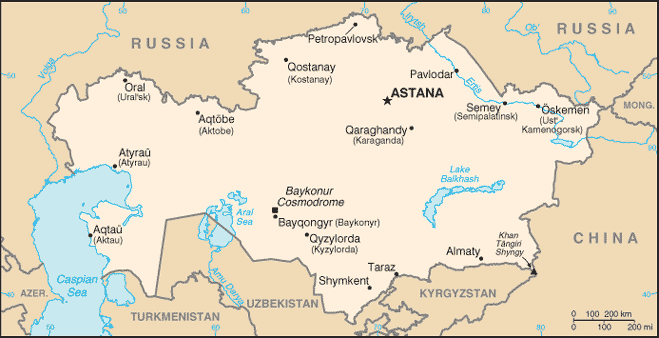Map:

Overview:
Native Kazakhs, a mix of Turkic and Mongol nomadic tribes who migrated into the region in the 13th century, were rarely united as a single nation. The area was conquered by Russia in the 18th century and Kazakhstan became a Soviet Republic in 1936. During the 1950s and 1960s agricultural "Virgin Lands" program, Soviet citizens were encouraged to help cultivate Kazakhstan's northern pastures. This influx of immigrants (mostly Russians, but also some other deported nationalities) skewed the ethnic mixture and enabled non-Kazakhs to outnumber natives. Independence in 1991 caused many of these newcomers to emigrate. Current issues include: developing a cohesive national identity; expanding the development of the country's vast energy resources and exporting them to world markets; achieving a sustainable economic growth outside the oil, gas, and mining sectors; and strengthening relations with neighboring states and other foreign powers.
The People:
Population: 15,185,844 (July 2005 est.)
Age structure:
0-14 years: 23.7% (male 1,834,535/female 1,758,988)
15-64 years: 68.4% (male 5,075,243/female 5,312,536)
65 years and over: 7.9% (male 424,341/female 780,201) (2005 est.)
Religions:
Muslim 47%, Russian Orthodox 44%, Protestant 2%, other 7%
Government Type:
republic; authoritarian presidential rule, with little power outside the executive branch
Leader(s) to pray for:
chief of state: President Nursultan A. NAZARBAYEV (chairman of the Supreme Soviet from 22 February 1990, elected president 1 December 1991)
head of government: Prime Minister Daniyal AKHMETOV (since 13 June 2003); First Deputy Prime Minister Akhmetzhan YESIMOV (since 14 May 2004)
Source: The World Factbook
View All Countries